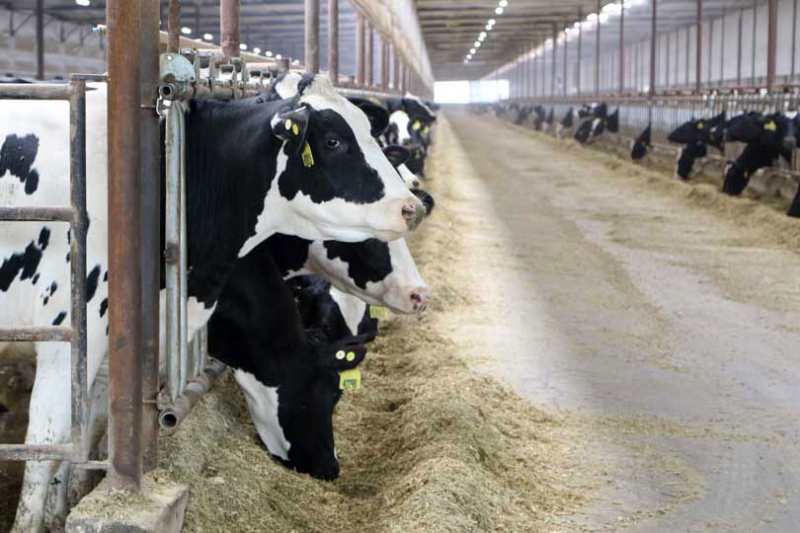The U.S. Department of Agriculture (UDSA) announced it is taking additional actions to ensure the health and viability of the nation’s livestock and poultry.
USDA is adding an additional $824 million in emergency funding from the Commodity Credit Corporation (CCC) to bolster these efforts and is launching a new Voluntary H5N1 Dairy Herd Status Pilot Program to give dairy farmers more options to monitor the health of their herds and move cows more quickly while providing on-going testing and expanding USDA’s understanding of the disease.
Emergency funding to build on response efforts
The $824 million will be used by USDA’s Animal and Plant Health Inspection Service (APHIS) to directly support the response efforts.
This funding allows APHIS to continue its critical work with state and local partners to quickly identify and address cases of HPAI and H5N1 in poultry and livestock.
The funding will support anticipated diagnostics, field response activities, pre-movement testing requirements, other necessary surveillance and control activities, surveillance in wildlife for APHIS, the Agricultural Research Service’s (ARS) work in developing vaccines for HPAI in cattle, turkeys, pigs, and goats, and ARS and the Food Safety and Inspection Service’s food safety studies.
USDA previously approved the use of $1.3 billion in emergency funding to address nationwide HPAI detections in wild birds and commercial poultry operations. These additional funds will ensure continued robust and rapid response to this outbreak, according to USDA.
Voluntary Dairy Herd Status Pilot Program
APHIS created a Voluntary H5N1 Dairy Herd Status Pilot Program, which provides alternative testing and movement options to the federal order to increase USDA’s monitoring capabilities to mitigate the spread of H5N1.
The Voluntary H5N1 Dairy Herd Status Pilot Program aims to create additional testing options for farmers with herds that have tested negative for three weeks in a row, further reduce H5N1 virus dissemination, provide for further opportunities to test herds that are not known to be affected with H5N1, increase surveillance and expand our knowledge of the disease, and support an overall national program to reduce the risk of H5N1 in dairy herds.
The main benefit for farmers who choose to enroll in the Voluntary H5N1 Dairy Herd Status Pilot Program is that once they can demonstrate their herds are free of H5N1 with results from a National Animal Health Laboratory Network (NAHLN) facility, they will then need to conduct weekly tests on bulk milk from that herd to confirm that status and will be able to ship their cows at the time they prefer and without testing individual animals.
Dairy farmers from states enrolled in the first phase of this program who choose to enroll their herds and who test negative for H5N1 for three consecutive weeks using on-farm bulk tank milk samples or similar representative milk samples tested at a NAHLN laboratory will be able to move animals without additional pre-movement testing currently required under the federal order. Producers must also comply with continued regular weekly monitoring and testing of the herd for H5N1.
APHIS is working with state animal health officials to identify states to participate in a pilot phase of the program. Producers from states participating in this pilot can start enrolling in the Voluntary H5N1 Dairy Herd Status Pilot Program on the week of June 3, 2024, by contacting their APHIS Area Veterinarian in Charge or state veterinarian and signing a Herd Monitoring Plan agreement.
Those herds not enrolled in the pilot program will continue to follow the interstate testing and movement requirements published in the federal order. More specific guidance on the new program, including how to enroll and how to obtain and maintain a herd status, will be made available on the APHIS website in the coming days.
As additional testing measures take place, USDA anticipates that it will see an increase in testing and positive test results, which will add to the knowledge of the disease and how it may spread between herds. At the same time, this pilot program will help to gather additional information on how producers with affected herds can document elimination of the virus on their operations and steps they can take to maintain an H5N1 virus-free herd.
This new investment in risk mitigation augments the previously announced Federal Order on pre-movement testing of lactating dairy cattle, announced on April 24, as well as the tools to support biosecurity activities, announced on May 10, and the Emergency Assistance for Livestock, Honey Bees, and Farm-raised Fish Program funding availability, announced on May 23.
To learn more about USDA’s response to H5N1 in dairy cattle, visit www.aphis.usda.gov/livestock-poultry-disease/avian/avian-influenza/hpai-detections/livestock.


Leave A Comment